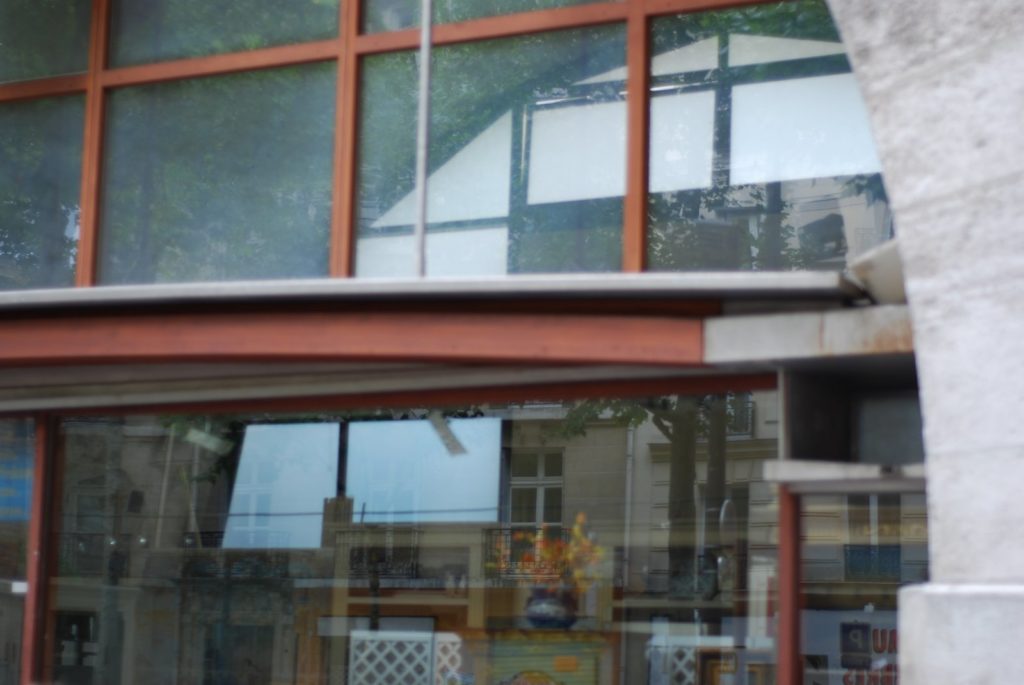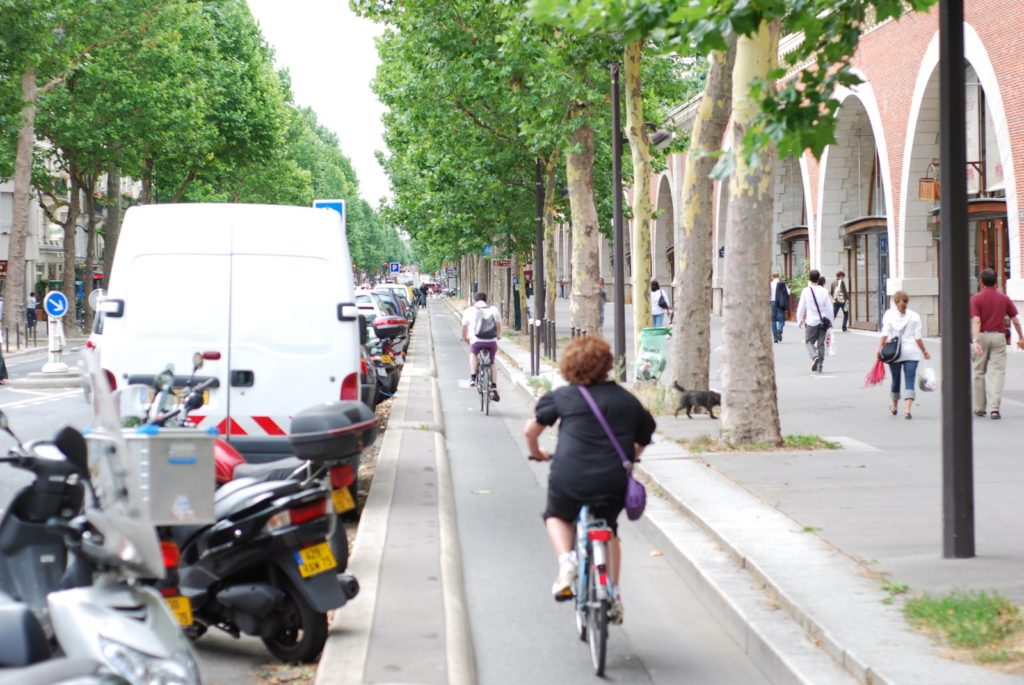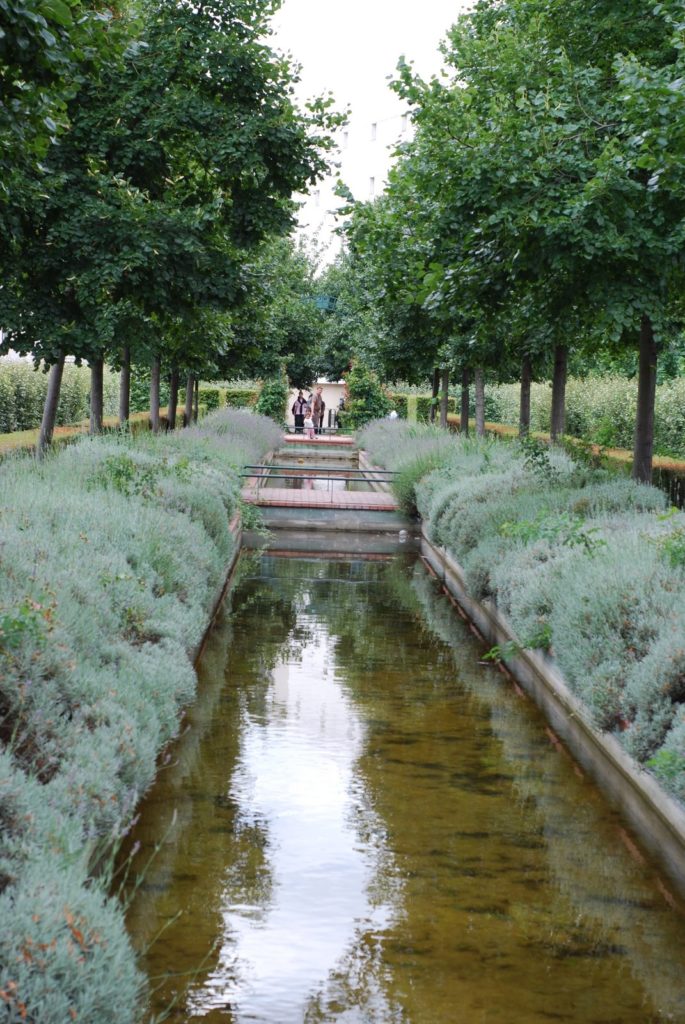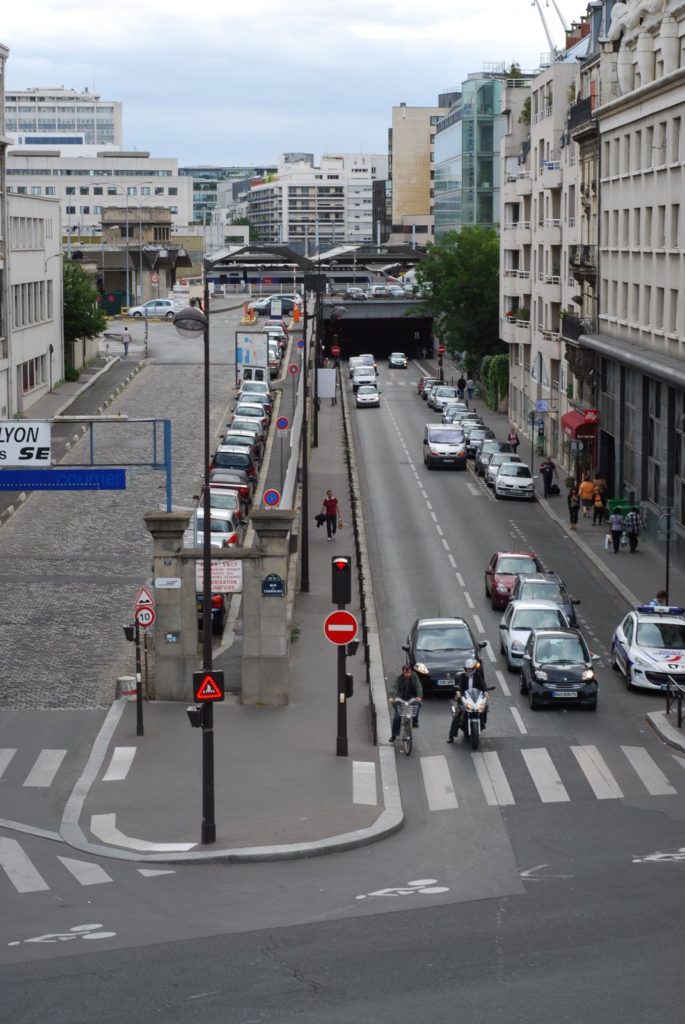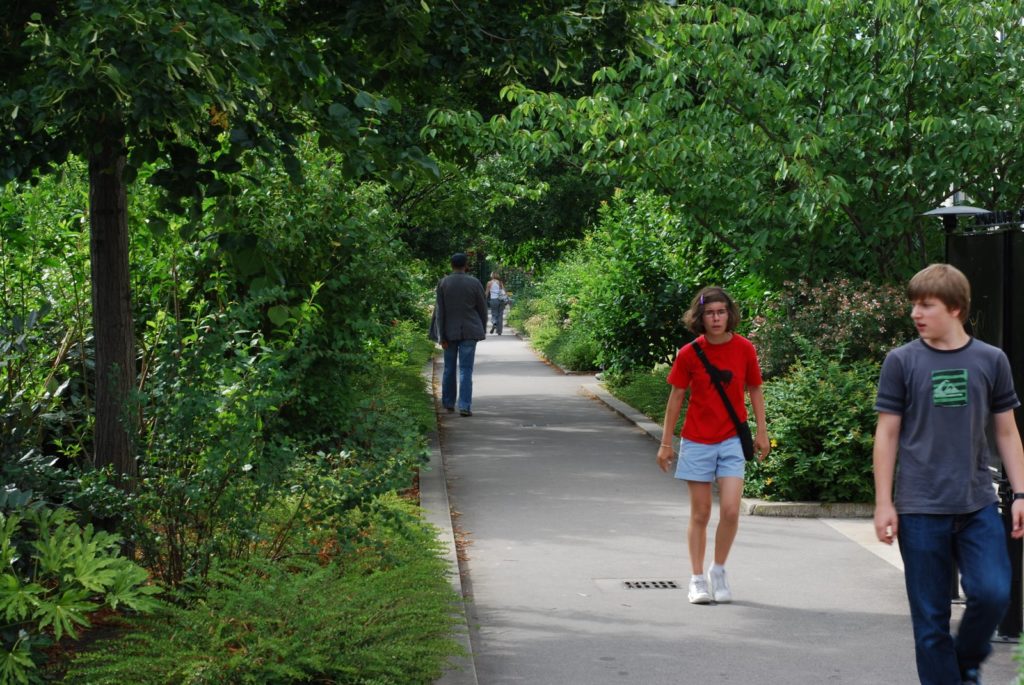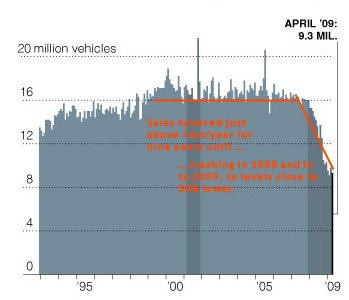There has been a lot of debate as to the overall efficacy of the Car Allowance Rebate System, (legislators love acronyms) colloquially known as “Cash for Clunkers.” On a few subjects there isn’t much contention: it has been “successful” in getting people to buy new, and generally more efficient, cars. In other words, if people have a financial incentive to trade up to a more efficient car, they will do so. Especially if the incentive is (probably) set too high.
So, I’m not down on Cash for Clunkers. First of all, it’s proof that a government program can work. It was quick and effective and probably stimulative (more so than environmental)–most of the cars in the program were made in the United States. That’s good in that it may help convince some anti-government types that government is not always the problem. Second, it is not increasing the number of cars on the road. While it is certainly not perfect, a far more worrisome development would have been a program that mailed out checks to people to buy new cars; a program which I could see government embracing. Third, it can’t be debated that the new cars on the road are, in fact, less polluting than the current ones. While not everyone went out and bought the newest Prius (although many are), a 60% gain in efficiency is nothing to scoff at. Even if these cars may be driven more than their predecessors (since they’ll be new and reliable and, well, not clunkers) there will likely be an overall decrease in emissions.
On the other hand, the program could have, obviously, been better administered. First of all, $3500 to $4500 is a lot of money. I thought about buying a clunker, trading it in, buying a new car and turning around and selling that–even with the title transfers, time involved and money lost to depreciation, I’d probably clear a couple grand. (I’m not sure, however, if I could have qualified with a new-to-me clunker.) In any case, smaller sums–$1000 to $2000–would have likely resulted in many sales but not the veritable run on the bank that car dealers have recently seen. In addition, there was no provision for people with clunkers who wanted to get out of car ownership completely. The only way they could do so would be to trade in the clunker, buy a new car, and turn around and sell it. Maybe the next program should be that if you bring in an old car, the government will give you a year-long transit pass for the agency of your choice and a $1000 credit for your local car sharing agency. This, too, would cost less than $3500, and dramatically reduce emissions and the number of cars in the road. (Yes, I have a bit of a vested interest in the second half of this proposal.)
While the transit-car sharing idea is a bit of a pipe dream, politically, one which is less of one would be a better-graduated system. The CARS program had hard cutoffs. If you car gets tenth of a mile per gallon over the limit, you get nothing. A tenth less and nearly $5000 can be in your pocket. Furthermore, you get this money whether you upgrade to a still-overpowered sedan or SUV getting in the low 20s or a Prius (or similar) getting twice that. So what would make more sense would be a graduated system. Trade in an 18 mpg car and go to a 22 mpg and we’ll give you a few hundred dollars for your trouble. Go from a 14 mpg SUV to a Prius (or a similarly “clean” car), and you can cash in on the full $4500. Or more.
That’s all well and good and probably won’t happen. Nor will credits for transit commuters, cyclists and others who choose not to drive. It costs too much money and isn’t terribly stimulative and probably doesn’t have the votes. Furthermore, the CARS program was very simple. Your vehicle either does or does not qualify, and you can get either $3500 or $4500. For these others, we’d need charts. And if you put mathematics in between an American consumer and a deal, they’re far less likely to do it. In other words, if you make it as confusing as doing your taxes, people are going to like it about as much.
There is a relatively simple way to achieve nearly all of these objectives. It would require little administration, since the methods of collection and distribution are already in place (and have been for years, and work fine). Yet, for a variety of reasons, it is a political third rail. It is, of course, the gas tax.
The federal gas tax is 18.4 cents per gallon. That’s right. 18.4 cents. Most states have their own taxes on top (Alaska is the only holdout) raising the total tax as high as 60¢, in New York State. The federal portion was last raised in 1991. Yup, 18 years ago. Since then, prices have increased 58%. Had the gas tax kept up, it would be 29¢ today. The gas tax in 1991, however, accounted for about 17% of the cost of a gallon of gas (at that time, gas, with the tax, cost about $1.20). If gas taxes were based on percentages, they would be about 43¢, and last summer would have crept to nearly 70¢.
So, it’s obvious that gas taxes are low. And it’s also pretty obvious that there is some climate stuff going on, and that having people use less gas would be beneficial. In addition, using less gas would keep prices lower and supplies more stable, as well as encouraging energy independence. These are all good externalities, but, perhaps most importantly, the gas tax, if it is adjusted for some rural populations and low income communities, is a very efficient way to raise tax revenues.
Mention raising the gas tax and you’ll hear two responses. One is “it’s not politically possible.” The other is “it’s regressive.” The first is, sadly, perhaps true. The second is not, and, particularly when it is offset with some sort of tax credit, potentially a straw man. When the tax was last raised, 18 years ago, this was debunked. In several manners, it has to do with how you look at gasoline: whether it is a necessity or a luxury. If it is a necessity, then, yes, the tax is likely somewhat regressive. This is the reason we don’t place punitive taxes on clothing and food: you need both to survive. Gasoline, however, is a different story. In New York City, 55% of the residents do without a car. Yes, it’s a special case. But is there anywhere where more than half the residents do without food or clothing? In several other major cities, more than a quarter of households don’t have cars. For some it is an economic decision. For others, it is about lifestyle. But it is rather obvious that, especially in areas with decent public transport, owning a car is not a necessity.
And for these people, which number in the millions, a gas tax is not regressive at all. Many of them are the same people who the highway lobby defends; the people for whom a gas tax will be painfully regressive. However, as long as they aren’t driving a gas tax will have no effect, although it might drive more people towards transit use and increase service levels.
The other worrisome issue are those people who live in rural areas. For them, higher gas taxes will result in higher costs, because living at a low density tends to require a lot of driving. And for farmers, a rise in gas prices will create a rise in production costs, for both mechanized agriculture and transportation. There are two ways of dealing with this issue. One is direct subsidies to growers to buy cheaper fuel, although such a system would be fraught with fraud and inefficiencies. (If we’ll sell you 10 gallons of cheap gas, is there much of an incentive to economize and only use nine?) A simpler way, of course, is to pass the costs along: food prices might rise a bit, but everyone would have increased costs, and everyone would pay. In addition, there would be a fine incentive to save fuel, which would both reduce costs and be more environmental. For those who live rurally for the lifestyle, they’ve made a choice to live a car-dependent (and fuel-dependent) lifestyle. It’s only fair that they pay more.
Finally, there is a way to make sure that a gas tax would both not hit the poor especially hard and be stimulative as well: return the extra money spent on gas, in advance, as a tax credit. Estimate the amount of gas used per year (recently about 140 billion gallons) and the amount of money that, say, a $1 gas tax increase would raise (with less use, about $120 billion). Knowing that that revenue increase was in store, the government could turn around and write a $500 check to every tax payer in the country at the beginning of the year. A nice letter could be enclosed:
We know that we’re increasing your gas tax. Here’s $500. If you need it for gas, use it for gas. If you want to buy a more efficient car, here’s some help to buy a new car. If you are interested in local transit service, here’s a website where you can find out more. Here’s information about car sharing, car pooling and other fuel saving techniques, too.
Oh, and enjoy the $500!
People worried about fuel costs could save the money for the year. Many others would spend the money in ways that would stimulate the economy. Others would, in the face of higher gas prices, use it for transit passes. And it would be a very progressive tax rebate: it would benefit those at lower income levels far more than those at the top.
In the long run we might, as a society, want to use this money to fund more effective transportation policies. Maybe the amount would decrease by $50 a year as people got more used to higher taxes, by driving more efficient vehicles or driving less. Any extra money could be put towards funding expansion and operation of transit agencies, and building new energy and transportation networks (as the current gas tax is earmarked for transportation). In the short run, as has been discussed in several places (including liberal blogs), consensus is that we can’t get everyone out of their cars tomorrow. But instead of expanding the Cash for Clunkers program, and making it more top-heavy and unwieldy, a gas tax would likely give us better results with easier implementation (since it’s already implemented).
And if everyone were promised a $500 check from the government, it just might be possible.













